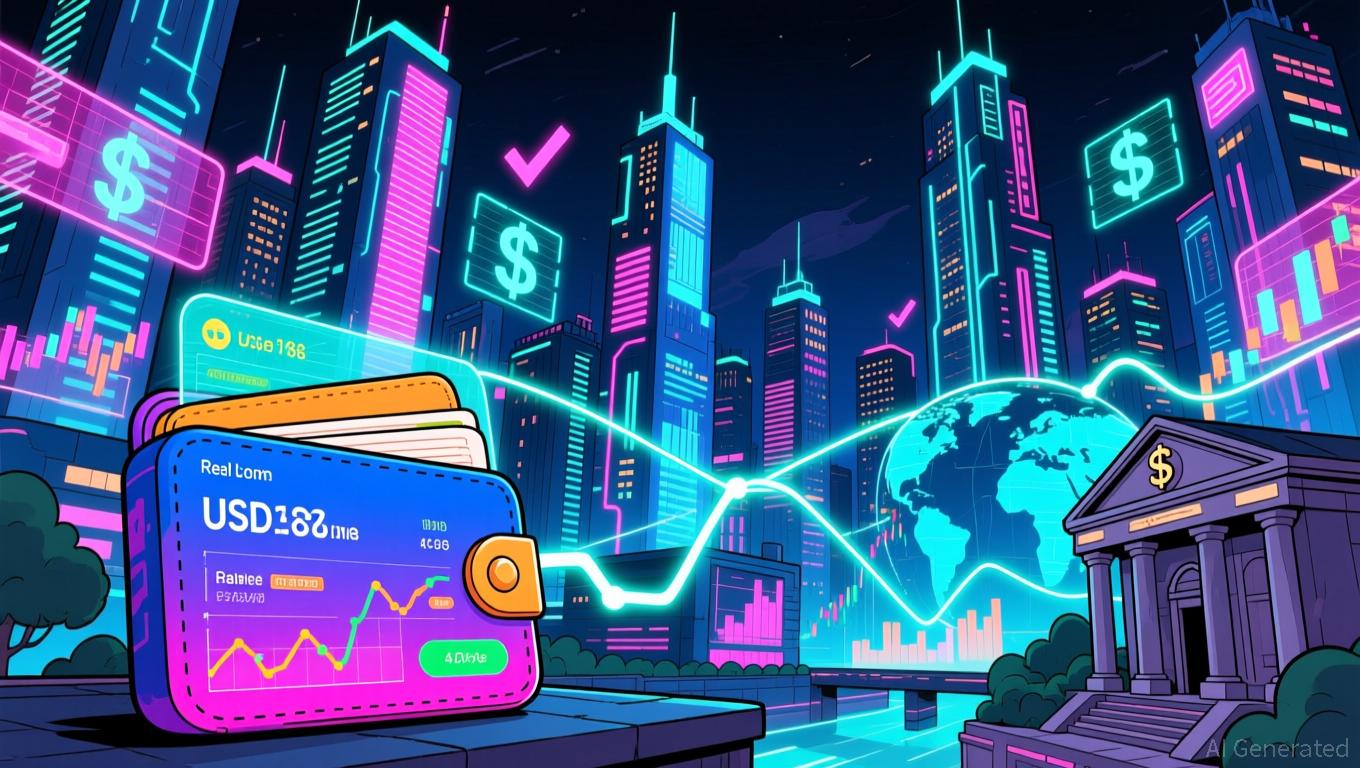Fed Officials Divided on Rate Cut Despite Pressure from Trump
- The Fed faces internal division over December rate cuts, complicating Trump's push for lower borrowing costs amid conflicting economic signals. - New York Fed's Williams supports near-term rate adjustments, while Boston's Collins dismisses urgency, reflecting broader policy disagreements. - Trump's potential influence is limited by Fed dissent, with delayed inflation data and mixed labor market trends adding to decision-making uncertainty. - Global markets and geopolitical developments will shape investo
The Federal Reserve is approaching a crucial decision in December, as disagreements within the institution about a possible rate cut grow sharper, complicating President Donald Trump’s efforts to lower borrowing costs. New York Fed President John Williams has indicated openness to “short-term” changes to the federal funds rate, while Boston Fed President Susan Collins has minimized the need for immediate action, highlighting a deeper divide among policymakers.
The main issue is whether the latest economic indicators support additional rate cuts.
Trump, who has often challenged the Fed’s independence, may find his ability to sway policy limited by these internal disagreements.

As the Fed weighs its options, the broader economic outlook remains fragile.
The results of the December meeting will have significant consequences, not just for American markets but for global financial stability as well. With the Fed caught between opposing policy views and outside influences, the direction ahead remains unclear—reflecting the complex dynamics shaping monetary policy in today’s unpredictable environment.
Disclaimer: The content of this article solely reflects the author's opinion and does not represent the platform in any capacity. This article is not intended to serve as a reference for making investment decisions.
You may also like
Stablecoin Market Exceeds $280B as ECB Warns of Potential Systemic Risks
- Stablecoin market exceeds $280B, driven by regulatory clarity and institutional adoption, capturing 8% of crypto assets. - ECB warns of systemic risks from stablecoin concentration, de-pegging events, and mass redemption "runs" threatening global markets. - USDC overtakes USDT in onchain activity due to regulatory alignment, with Circle's market cap rising 72% YTD to $74B. - ECB calls for global regulatory coordination to address cross-border arbitrage gaps and prevent destabilizing retail deposit shifts

Bitcoin News Update: MicroStrategy Faces an Identity Dilemma—Is It a Technology Company or a Bitcoin Holding Entity?
- MicroStrategy faces potential MSCI index reclassification as a Bitcoin investment vehicle, risking $8.8B in passive fund outflows. - The debate centers on whether crypto-heavy firms should be classified as operating businesses or passive funds, impacting capital access and valuation. - CEO Michael Saylor defends MSTR as a "structured finance company," leveraging Bitcoin-backed securities to differentiate from passive vehicles. - Compressed stock-to-NAV multiples and Bitcoin's price slump threaten MSTR's

Japan Sets Out to Rebuild Investor Confidence in Crypto Following Significant Security Breaches
- Japan's FSA will mandate crypto exchanges to hold liability reserves proportional to trading volumes and security risks, modeled after traditional securities safeguards. - The reform responds to major breaches like the 2024 DMM Bitcoin hack ($312M stolen) and allows exchanges to offset reserve costs via insurance policies. - New rules require segregating user funds from corporate assets and reclassify crypto as securities under the Financial Instruments Act to enable investment products. - Experts view t

Bitcoin News Today: Bitcoin's Rebound Fails to Ease Crypto's Liquidity Crunch
- Bitcoin's $80,000 rebound failed to reverse crypto's liquidity crisis as structural risks deepen amid macroeconomic pressures and thinning market liquidity. - Total crypto market cap fell below $3 trillion with $950M+ liquidations, while Bitcoin's dominance dropped below 49% as capital rotated into altcoins like HBAR and HYPE. - Institutional divergence emerged: spot ETFs saw $1.38B redemptions while on-chain accumulators added 42,000 BTC, contrasting with long-term investors offloading ~42,000 BTC this
